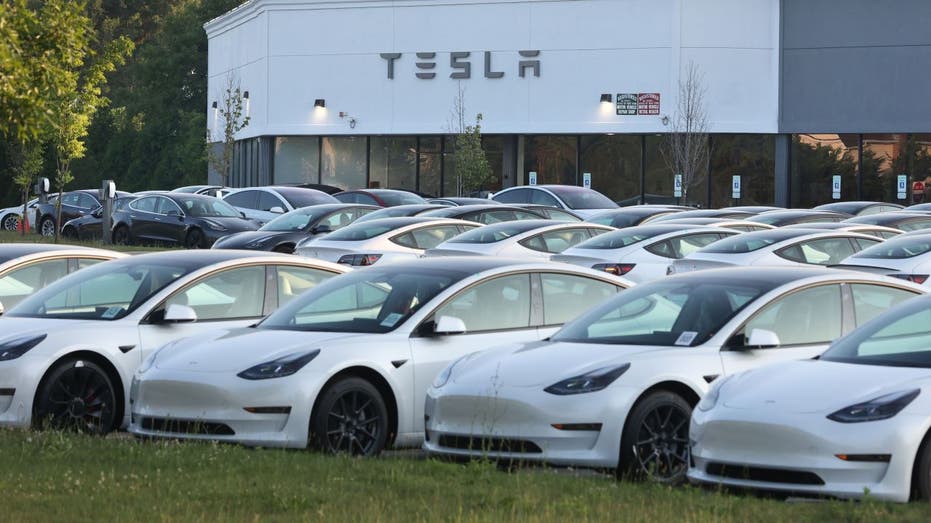(Fox Business) Energy experts are warning about numerous potential issues for electric vehicles, including affordability, range, weather, infrastructure and economic concerns, even as the government and car companies increasingly push them on Americans.
Bryan Dean Wright, former CIA operations officer and host of the podcast “The Wright Report,” told Fox News Digital that American society has shifted to EVs largely because some people are “just so hellbent on making sure that this transition happens, even if that means wrecking the economy, in terms of electricity, its reliability, the grid, getting brownouts or blackouts or economic wreckage by people who otherwise can’t afford these new vehicles.”
“That cost is being shouldered by buyers and car companies by raising the price of gas-powered vehicles, [which] is basically just a direct wealth transfer, just paying for EV subsidies and that will grow over time, if we continue to keep this regime in place,” Brent Bennett, a policy director for Life:Powered, an initiative of the Texas Public Policy Foundation, told Fox News Digital.
California, Wright said, is likely a “really sad test case” for what the rest of the country could face, where he said it currently costs about $250 an hour to service an EV. The state has made a strong push for EVs under Gov. Gavin Newsom, and Californians will by 2035 not be allowed to buy new gas-powered cars and light trucks.
“Some of those expenses are going to come down because you’re going to find manufacturing efficiencies and you’re going to be able to lower the cost of that product,” Wright said. “But as of this moment, with all the push, it is a wealth transfer from people who have their current gas vehicles to an EV. I don’t know if that’s going to be the case in 10 or 20 years, but what we see in California is because of some of these dirty green policies.”
Bennett discussed the $7,500 federal tax credit for EVs, which he said “is one small part of the whole equation” when it comes to what the government is doing to subsidize EV production.
“We calculated that if you add on the socialized infrastructure costs, and then in particular add on California’s zero emission vehicle mandate, which adds cost to all of us because the automakers have to pay to produce more EVs in California, and they spread that cost to the whole country, the federal fuel economy regulations alone are subsidizing each EV by about $20,000. Add all this together, and each EV is getting almost $50,000 in subsidies,” he said.

Tesla automobile plugged in and charging a Supercharger rapid battery charging station for the electric vehicle company Tesla Motors, in the Silicon Valley town of Mountain View, California, August 24, 2016. (Getty Images / Getty Images)
As a result of these polices, many Californians’ utilities have gone up, which Wright said is only going to continue hurting the lower and middle classes the most.
“The burden of this revolution is it is fundamentally a tax on the working class and on the middle class … a lot of folks struggling in those two worlds and it really is unfair to a lot of the working folks in this country,” he said.
If we continue on the current path, Wright warned of a tremendous amount of economic wreckage in many parts of the country, as well as the world, because infrastructure just cannot support these government mandates.
“At some point we’re going to face this issue of, we don’t have the charging infrastructure, we don’t have enough electricity overnight, we’re going to have to adjust unless we want to crash the global economy,” he said.
Jason Isaac, senior fellow with Life:Powered, said EVs have been pitched as a “gadget” through powerful marketing, but argued people are now re-thinking their decisions after hearing stories about their unreliability. The main reasons are attributable to what he calls “range anxiety,” the lack of charging infrastructure, as well as the high cost of the EVs themselves.
Wright explained how charging and the three different levels of electricity available for EVs complicate the experience for EV owners.
Level one, for example, is what you plug into your wall at home, while level three chargers which are the most powerful, can only be found at the equivalent of a gas station. Level two chargers can be installed in a home, but they cost about $2,000 to $4,000 to install and don’t include the cost of fuel, Wright said. Level 3 chargers, in contrast, are expensive and require significant infrastructure, making them “incredibly difficult” or “impossible” to conveniently build throughout rural America, he said.
He also warned that people who are able to charge their EV at a plug-in installed in their home will still likely face high electricity bills.
“You’re plugging it in, but you’ve got an electricity bill, and the cost of that is really going to be dependent on where in the country you are,” he said. “You might have very cheap power with nuclear power or hydropower, or you can have very expensive power with solar and wind.”
Also, those who charge their EVs at home tend to use them between the hours of 10 p.m and 6 a.m. when there simply isn’t enough electricity to go around, which could result in the electricity grid crashing, Wright said.

New Tesla electric vehicles fill the car lot at the Tesla retail location on Route 347 in Smithtown, New York on July 5, 2023. (Photo by John Paraskevas/Newsday RM via Getty Images / Getty Images)
Bennett said the “socialized costs of electricity” pose a problem, especially when an EV charging overnight consumes as much power as three to four homes.
In a neighborhood of 80 homes, where everyone has an EV and all of them are charging at the same time, it would be the equivalent of adding four times as many homes to the neighborhood, likely exceeding the neighborhood’s available electrical load.
“Now imagine, instead of over eight hours, you’re trying to charge in 30 minutes on a fast charger,” he said. “Well, now you’re talking about that EV alone drawing as much power from the grid as a small grocery store. You put four of those together at a Tesla supercharging station, you’re talking as much power as a Walmart, so you have to upgrade your electrical infrastructure, your transmission and distribution infrastructure to support that.”






